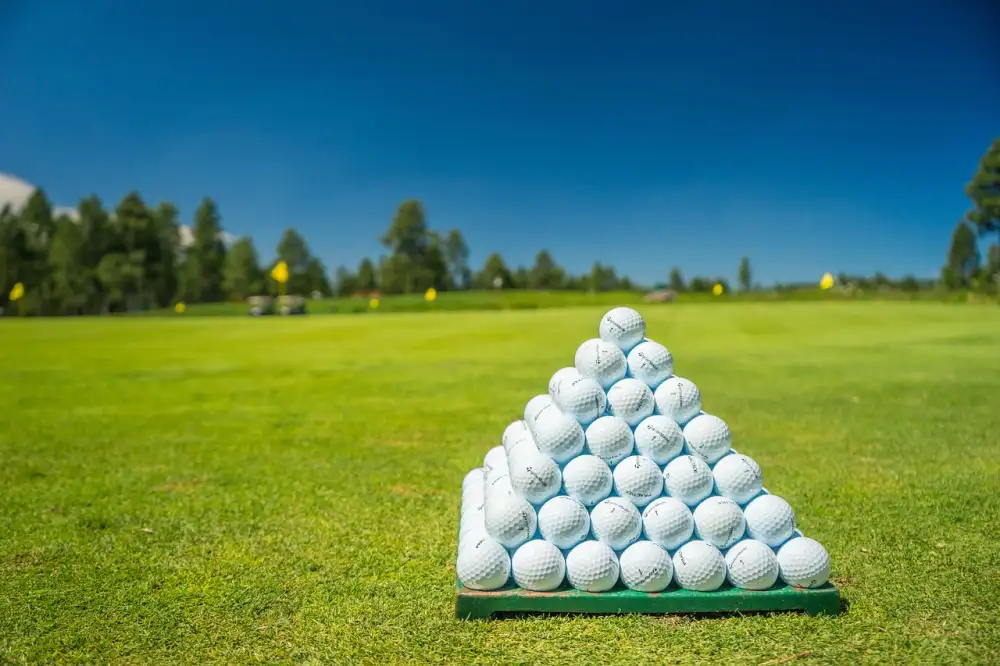Unveiling the Key Muscles Engaged in the Golf Swing: Enhance Your Health and Performance on the Course!

- The Core Muscles: Engaging the Powerhouse of the Body
- The Upper Body Muscles: Generating Speed and Control
- The Lower Body Muscles: Providing Stability and Balance
- The Glutes and Hips: Initiating the Rotation and Transfer of Weight
- The Shoulders and Arms: Creating the Swing Path and Club Speed
- The Forearms and Wrists: Maintaining Control and Accuracy
The golf swing is a complex and dynamic movement that requires the coordinated effort of various muscles throughout the body. While technique and skill play a significant role in a golfer's performance, it is essential to recognize the crucial role that muscles play in executing a powerful and accurate swing.
Muscles are responsible for generating the force and speed required to propel the golf ball towards its target. They provide stability, balance, and control throughout the swing, ensuring accuracy and consistency. Understanding which muscles are engaged during each phase of the swing can help golfers optimize their performance on the course.
In this article, we will delve into the key muscles involved in the golf swing, exploring how they contribute to power generation, stability, control, and overall performance. By gaining insight into these muscle groups and their functions, golfers can develop targeted training programs to enhance their strength, flexibility, and coordination on the course.
The Core Muscles: Engaging the Powerhouse of the Body
The core muscles play a crucial role in the golf swing, as they provide stability and power to generate clubhead speed. These muscles include the rectus abdominis, obliques, transverse abdominis, and erector spinae. The rectus abdominis helps in flexing the trunk forward during the downswing, while the obliques rotate the torso and generate rotational force. The transverse abdominis stabilizes the spine and pelvis, ensuring proper alignment throughout the swing. Lastly, the erector spinae muscles help maintain an upright posture and provide support during rotation. Engaging these core muscles not only enhances your performance on the course but also reduces the risk of injury.
The Upper Body Muscles: Generating Speed and Control
The upper body muscles play a crucial role in generating speed and control during a golf swing. The primary muscles involved in this process include the pectoralis major, deltoids, and latissimus dorsi.
The pectoralis major, located in the chest area, helps to generate power and stability during the backswing and downswing. It is responsible for controlling the movement of the arms and maintaining proper alignment throughout the swing.
The deltoids, which are located in the shoulder area, are responsible for initiating the movement of the arms during the swing. They help to generate clubhead speed and provide stability during impact.
The latissimus dorsi, also known as the "lats," are large muscles that extend from the middle back to underarm region. These muscles contribute to generating power and control by assisting with rotation and extension of the upper body during the swing.
In addition to these primary muscles, other upper body muscles such as the trapezius, rhomboids, and biceps also play a supporting role in providing stability, balance, and control throughout different phases of the golf swing.
To optimize performance on the course, it is important to strengthen and condition these upper body muscles through specific exercises targeting each muscle group. This can improve clubhead speed, accuracy, and overall control over shots.
By understanding how these upper body muscles work together to generate speed and control in a golf swing, players can focus on targeted training programs that will enhance their performance on the course.
The Lower Body Muscles: Providing Stability and Balance
The lower body muscles play a crucial role in providing stability and balance during the golf swing. These muscles include the quadriceps, hamstrings, glutes, and calves.
The quadriceps, located in the front of the thigh, help to stabilize the knee joint and provide power during the downswing. They also assist in maintaining balance throughout the swing.
The hamstrings, located at the back of the thigh, work in conjunction with the quadriceps to provide stability and control during weight transfer. They help to prevent excessive movement of the lower body and maintain proper posture.
The glutes, which are comprised of three muscles (gluteus maximus, medius, and minimus), are responsible for initiating hip rotation and transferring weight from one side to another. Strong glutes contribute to a more powerful swing and improved stability.
Lastly, the calves play a role in maintaining balance by stabilizing the ankles and providing a solid foundation for the golfer's stance. They also assist in generating power during the follow-through phase of the swing.
To enhance stability and balance in your golf swing, it is important to strengthen these lower body muscles through targeted exercises such as squats, lunges, deadlifts, and calf raises. A well-developed lower body will not only improve your performance on the course but also reduce your risk of injury.
The Glutes and Hips: Initiating the Rotation and Transfer of Weight
The glutes and hips play a crucial role in initiating the rotation and transfer of weight during the golf swing. The gluteus maximus, the largest muscle in the body, generates power as it contracts to rotate the hips and propel the swing forward. This movement allows for a smooth transfer of weight from backswing to downswing, maximizing clubhead speed and distance. Strong hip muscles, such as the hip flexors and adductors, provide stability and control throughout the swing, ensuring proper alignment and balance. By focusing on strengthening these key muscles, golfers can enhance their ability to generate power and achieve optimal performance on the course.
The Shoulders and Arms: Creating the Swing Path and Club Speed
The shoulders and arms play a crucial role in creating the swing path and generating club speed in a golf swing. The shoulder muscles, including the deltoids and rotator cuff muscles, are responsible for initiating the backswing and downswing. They provide stability and control throughout the swing, allowing for precise movements.
The arms, particularly the biceps and triceps, contribute to club speed by generating power during the downswing. The biceps contract to pull the club towards the body, while the triceps extend to release the club at impact. This coordinated effort of the shoulder and arm muscles is essential for generating maximum clubhead speed and distance.
Proper technique and strength in these muscles are vital for consistent ball striking. Strengthening exercises such as shoulder presses, lateral raises, and bicep curls can help improve muscle endurance and power in these areas. It is important to maintain flexibility in these muscles as well to ensure a full range of motion during the swing.
By developing strong shoulders and arms, golfers can enhance their ability to create an efficient swing path and generate increased club speed. This not only improves distance but also allows for better control over shot trajectory. So, incorporating exercises that target these key muscles into your training routine can greatly enhance your performance on the golf course.
The Forearms and Wrists: Maintaining Control and Accuracy
The forearms and wrists play a crucial role in maintaining control and accuracy during the golf swing. These muscles are responsible for controlling the clubface and ensuring proper contact with the ball. The flexor muscles in the forearms help to maintain a firm grip on the club, while the extensor muscles provide stability and control during the swing. The wrist muscles, including the flexors and extensors, work together to generate power and maintain control throughout the entire swing motion. Strengthening these muscles through specific exercises can improve wrist stability, allowing for more precise shots and better overall performance on the golf course.
In conclusion, understanding the key muscles engaged in the golf swing is crucial for enhancing both health and performance on the course. By developing a strong and balanced golf swing, players can optimize their power, control, stability, and accuracy.
To achieve this, it is essential to focus on strengthening the core muscles, which act as the powerhouse of the body. Engaging these muscles helps generate rotational force and stability throughout the swing.
Additionally, upper body muscles play a vital role in generating speed and control. Strengthening the shoulders and arms allows for an efficient swing path and increased club speed.
The lower body muscles provide stability and balance during the swing. Strengthening these muscles helps maintain a solid foundation for optimal weight transfer and balance throughout each phase of the swing.
Moreover, paying attention to glutes and hips is crucial as they initiate rotation and transfer of weight from backswing to downswing. Strengthening these areas enhances rotational power and overall performance.
Lastly, maintaining strong forearms and wrists is essential for control and accuracy. These muscles help maintain proper clubface alignment through impact, leading to consistent ball striking.
By focusing on developing strength in all these key muscle groups, golfers can improve their overall performance on the course while reducing the risk of injuries. Regular exercise routines that target these specific muscle groups will lead to a more powerful, controlled, accurate, and balanced golf swing.
So whether you are a beginner or an experienced golfer looking to enhance your game, remember that building strength in these key muscle groups is essential for achieving a strong and balanced golf swing. With dedication to training these muscles along with proper technique, you can take your golf game to new heights!
Published: 21. 02. 2024
Category: Health



